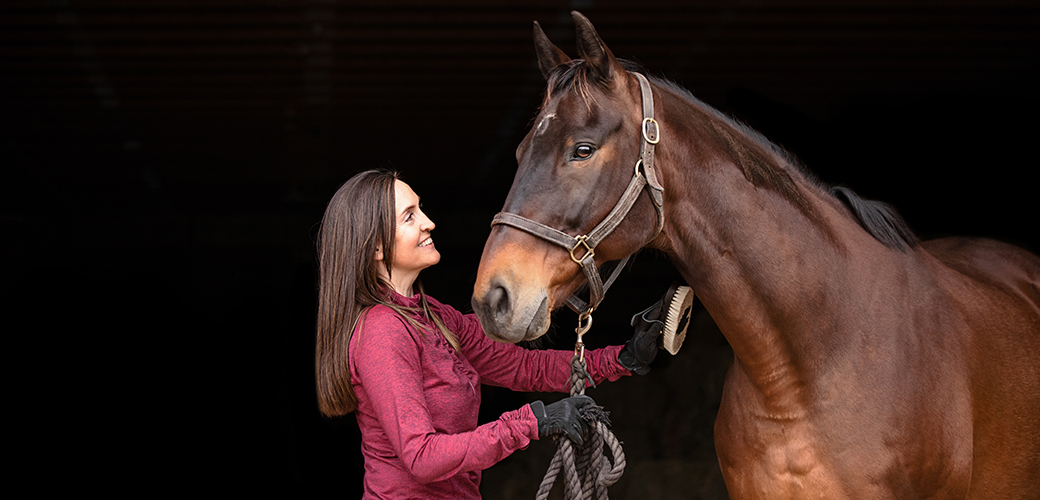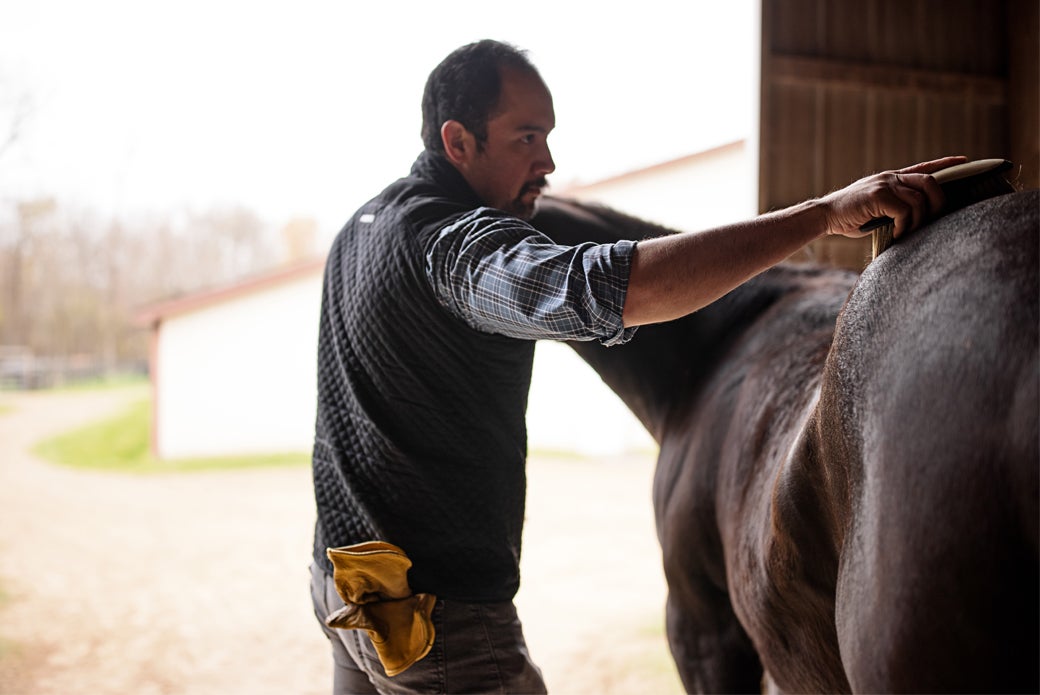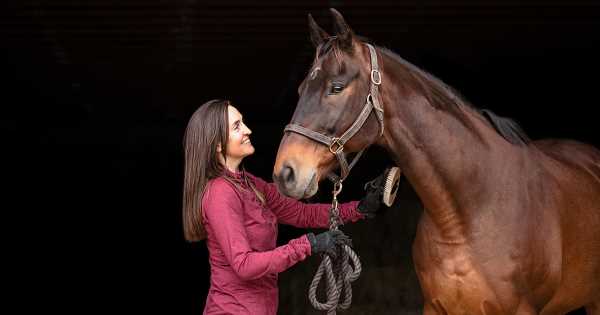

In many parts of the country, it’s just starting to warm up. The sun is shining, the trees are blooming and there’s no better time to adopt your #RightHorse so you can hit the trails and enjoy the late-spring weather with your new equine friend.
Spring also means that horses are shedding their winter coats, so it’s a perfect time to up your grooming game. Grooming is not only a great way to keep your horse healthy, it is also a time to bond with your horse.
- The foundation of every good grooming routine, especially during shedding season, is “currying.” Currying is a deep brushing technique using a curry comb that allows you to reach the base of your horse’s coat to bring up dirt and release healthy oils. Curry combs are usually made of rubber and have many rows of teeth, which allows the comb to loosen and remove loose hair and dust. If you’re looking to develop a shine, repeated strokes in the same area will warm up the hair follicles and release natural oils that’ll help your horse develop a sleek, shimmering coat.

- A hard brush, or a flick brush, is the next step in a good grooming routine. Use the brush’s stiffer bristles to remove the loose hair and dirt that you just unearthed with your curry comb. For most horses, this brush shouldn’t be used on the more sensitive areas of their body like their face, flank or legs.
- After you’ve removed the majority of the dirt and dead hair with your flick brush, you can start to polish your horse’s coat with a soft brush. With this brush, you’ll want to use longer strokes to pick up any remaining pieces of dirt and to distribute oils. During this part of the process, you’ll really see your horse start to shine!
- A horse’s mane and tail play an important role in repelling insects and keeping your horse comfortable. It’s important to carefully detangle their hair each time you groom your horse. Mane and tail combs can pull out hair excessively, so some people choose to detangle their horse’s tail manually. Additionally, there’s a variety of detanglers and conditioners on the market that can aid in keeping your horse’s tail looking great!
- And finally, don’t forget to clean out, or “pick out,” your horse’s feet. This is an important step that allows you to check for injury, infection or materials that could cause bruising, like rocks. Even if you don’t have time for a full grooming session, it’s always beneficial to take a quick minute to check your horse’s feet and make sure they’re clean.

At every stage of the grooming process, pay attention to your horse and watch for signs that they’re comfortable. Grooming is a great bonding opportunity for horse and human, but just like some of us prefer Swedish massages while others enjoy deep tissue, individual horses may find certain brushes or levels of pressure less comfortable than others. Most often, you’ll see an unhappy horse pin their ears back, tighten their jaw, stomp their hooves or swish their tail. If your horse finds any part of a grooming session uncomfortable, reduce pressure or switch to a softer brush. This also might indicate something is amiss, so carefully check for abrasions or skin conditions.
Now you and your #RightHorse are ready to hit the show arena, trails or simply enjoy each other’s company. If you don’t yet have a horse but have dreamed of getting into the barn, discover the many different ways you can get involved with horses.
Source: Read Full Article
